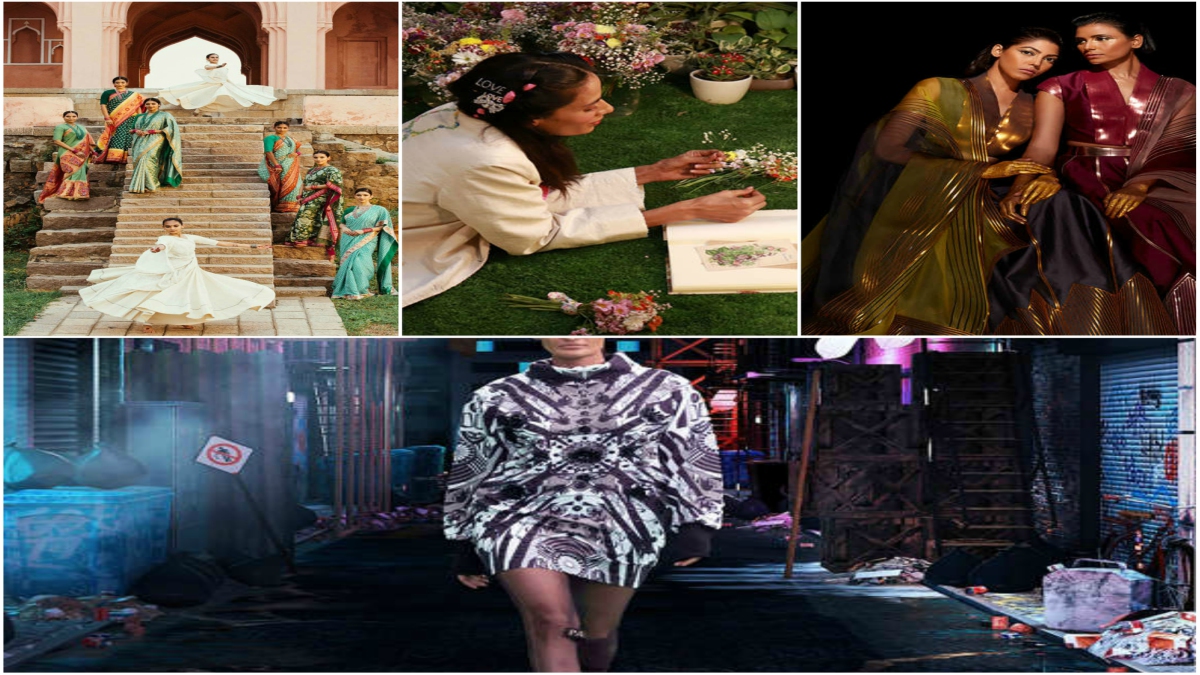


This year’s Lakmé Fashion Week witnessed designers repurposing a slower, sustainable and transparent process. The digital presentations gave people an opportunity to see what goes into a collection and went a long way towards cementing their bond with the designer, now seen as a person who works closely with karigars, artisans and weavers, one of the most-affected by this apocalyptic year.
My favourite was Péro By Aneeth Arora where the narrative followed nine girls confined at home during the lockdown, rediscovering their love for reading, gardening or baking. For craftspeople, the collection was god-sent. Aneeth Arora mixed mashru, gabardine and taffeta from South India with strips woven in Banaras and gingham checks, linen strips, gauze-like solids with contrast selvedge woven in Chanderi, Madhya Pradesh and Bengal. All of this went into creating a line of demure dresses with ruffles, French knots, hand-painted florals, embroidered wreaths and trellis. Despite disparate material, there was unity in the subtext—a joyous commitment to the handmade.
Raw Mango By Sanjay Garg shot its visuals in Shekhawati and showcased Marwari wedding rituals. I loved the poshak-inspired blouses and light trans-seasonal lehengas with graphically structured cholis. The central motif of the peacock held its own, while his new gota and bandhej techniques gave the ancient crafts a modern look. It brought to mind what he said: ‘’The challenge is to be away from the fashion cycle yet keep things visually engaging with new colours, motifs and techniques. I love exploring ways in which traditional textiles and motifs can make sense today and how we can balance tradition and modernity.’’
Amit Aggarwal married recycled polymer with chanderi and matka silk to create festive couture. A sign of hope is received gratefully in tumultuous times and he took inspiration from the cosmos and, through his design treatment, sent the message: be a star that refuses to dim when shadowed. I loved how leheriya created an illusion of the cosmos and temple motifs from South India were blended with polymer for a fresh look. Was it effortful? Absolutely. The separates, lehenga and saris were wearable and did not skew into costume.
Ihave always admired Farah Sanjana’s alignment with sustainability. “I upcycle scraps, sequins, beads or gemstones to make masks, cushion covers and courier bags and recreate dead stock from winter into summer silhouettes,” she says. In alignment with her design philosophy, her youthful line was accentuated with upcycled textile, foil and metallic strips. Hot-sellers include the sari drape pants, mini with patched pockets and shorts worn with a double-breasted jacket.
Gaurang Shahshowed saris inspired by the courtesan Taramati. Here, Jamdani weaves in Ikat, Kanchi, Patan, Kota, Uppada, Banarasi, Kani, Venkatagiri and Paithani were lifted with aari, chikankari, kasuti, shibori, kantha and Parsi gara. Sure, the saris were designed with indigenous weaves and textile crafts from different states but are sure to delight brides when trousseau shopping.
Indeed, the Lakmé Fashion Week was a platform for the things I love most about fashion: Following designers into their worlds, getting insight into how they transform ancient textile craft into living heritage that is globally relevant and seeing their collections up close.
The writer is the founder of Explosive Fashion and a respected voice in fashion commentary.